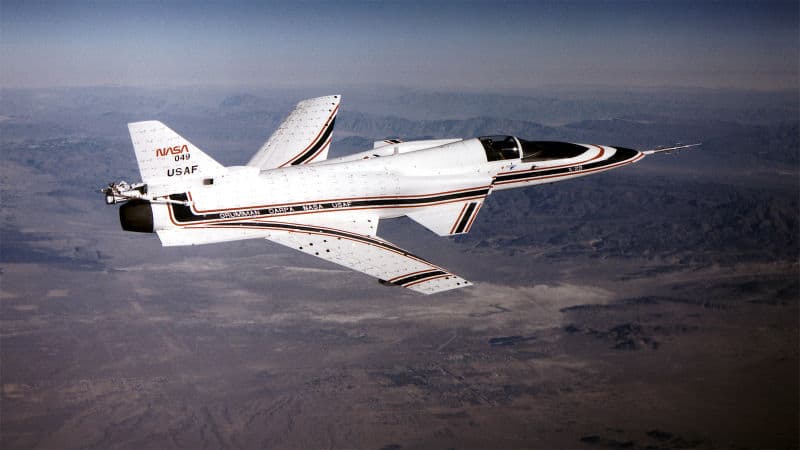X-29 Forward Swept Wing Jet

One of NASA’s coolest aircraft, this technology demonstrator (1984 – 1992) was way ahead of its time. The X-29 was known as a “three surface aircraft,” meaning it drew lift from the front canards, forward-swept wings, and aft strake control surfaces, rather than just traditional wings. Employing this three-surface longitudinal control significantly reduced trim and wave drag. To fight instability, the rear strakes provided trim whenever the plane’s center of gravity shifted. The net effect was to create one of the most ultra-maneuverable aircraft that ever existed. This unique configuration, combined with a center of gravity well aft of the aerodynamic center, made the craft inherently unstable. Stability was provided by the computerized flight control system making 40 corrections per second. The flight control system was made up of three redundant digital computers backed up by three redundant analog computers; any of the three could fly it on its own, but the redundancy allowed them to check for errors. Each of the three systems could “vote” on their measurements so that if one malfunctioned it could be ignored. It was estimated that a total failure of the system was as unlikely as a mechanical failure in an airplane with a conventional arrangement.
